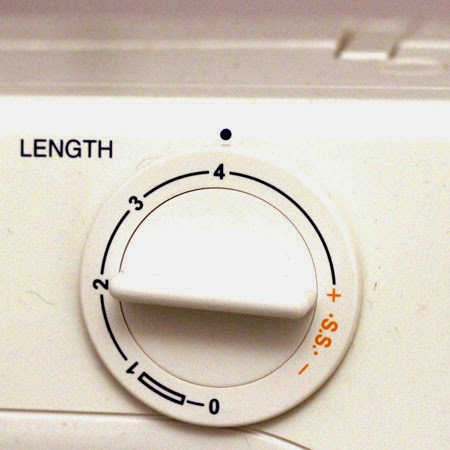Hi All, Today I want to show you how I gather fabric. I've used gathering for most of the clothes I've sewn -
skirt,
dress,
summer dress.
My first
free pattern phus phus skirt is gathered this way.
Gathering is a technique to crunch up the fabric to attach a longer piece of fabric to a shorter one. Before I show you my preferred method I also want to show to other methods I've tried. My preferred method finish is super :). I've made a miniature version here just for the tutorial.
I'm not the first person to discover this I'm sure, but at least I can
call it my learning :). Many of you might have been doing this way your
sewing life. :)
Below is step by step instructions:
I'm here using a 2 cm seam allowance. All steps are shown for 1 row of gathering. For all the rest the steps are the except the number of rows of gathering and where you run the gathering stitches vary. Below shows you how many and where to run the stitches. The faded blue line if the seam allowance.
Sorry about the spelling above. I'm unable to find the raw photos to edit now.
Below are some skirts where I've used the 3 rows with 3rd beyond seam allowance method.
I've made a mini tutorial for my fav method.
Mini tutorial here.
Detailed steps below:
1. Use a
contrast colour thread.
Divide the body and skirt into 4 equal sections (quarter and center)
and mark them(I just fold fabric to find centers - doesnt have to be accurate). The skirt width I'm using here is 3 times that of body. The horizontal line on skirt is the 2cm seam allowance.
2. Use
longest stitch length on your machine - 4 in my case.
3. Leave a
long tail of thread both bobbin and top thread (these will be used to pull and make the gather)
4.
Do not back stitch and stitch a row of gathering
midway of seam allowance within seam allowance(1 cm in my case).
For 2 gathers sew 1 row at 0.7 and another at 0.7cm from first row.
For 3 gathers sew 1 row at 05, 3nd at 1 and 3rd at 1.5 cm from cut fabric.
For 3 gathers with row outside
seam allowance sew 1 row at 0.8, second at 0.8 from first and 3rd row 0.8 cm from 2nd row.
I just eyeball it - the whole idea is to divide the area equally.
5. At the end again do not back stitch and
leave a long tail.
Now we are ready to gather.
6.
Separate bobbin thread from the top thread (I'm here using a seam ripper).

7. Place the body on skirt with
right sides together (the front of body facing down with front of skirt). Its difficult here to see right and wrong sides of fabric - wrong choice I agree. :)
8. Now
pin at 5 places aligning the markings we mad
e in step 1. - 2 at sides, 1 in center and 2 at quarters.
This is how the back or the wrong side looks.
9.
Pull the bobbin thread away from the fabric with one hand (left hand if you are right handed) and with right hand pull the
gathers formed towards the fabric.
10.
Push the gathers towards center of skirt. Repeat step 9 from the other side of the skirt till the skirt and body are of equal width.
Let call this the
pull push method. :)
It is now gathered but not even.
11. Using a
skewer or a chop stick or similar
spread the gathers so they look even.
Now they look lot better - evenly gathered.
12. Don't forget to set the machine to
normal stitch length.
13. With a 2 cm
seam allowance , sew two stitches and then back stitch this time.This is going be a permanent stitching. Also I find that its really important to
hold the fabric with your left hand perpendicular to the stitching line. This prevents the gathers from angling - if that's a word :)towards you or other way. usually it angles towards you.
Done!!. Now remove the gathering stitches - if you have a contrast colour thread its easy :). If you had been lazy then you'll now spend more time :).
For the last and best option of 3 rows of gathering you'll need to sew 2 rows on top of seam allowance and 3rd below seam allowance. A few pictures below.
This is a
mini tutorial. :)
Follow steps 1-6 to sew 3 rows of gathers - 2 above seam line and one after seam line.
Follow steps 7-10 - pull push method. You can see the gathers are not even and they are angled in most places.
Spread the gathers using a chopstick or something similar - step 11 so they are perpendicular to the sewing line.
Follow step 12-13 to sew along seam line.Remove the gathering stitches and press.
Thanks for reading.
Did you find it useful?
-Preethi.























































